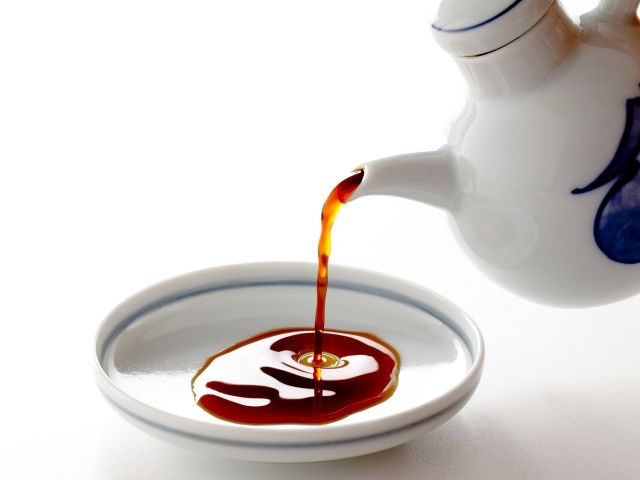
Many different things all over the world are share the name “sushi”. However, when Japanese people hear this word they think of “nigiri sushi”. Of course outside of Japan, it probably more commonly refers to sushi rolls.
Similarly, the way soy sauce is used also differs greatly between people in Japan and those in other countries. The soy sauce used for nigiri sushi is not primarily intended to add saltiness. Rather, it serves to suppress the fishy odor of raw fish and to enhance umami by adding the many amino acids found in soy sauce. Soy sauce is especially rich in glutamic acid, which, when combined with inosinic acid naturally present in the fish, creates a synergistic umami effect. Think of it more like an important background role to the sushi that isn’t meant to stand out.
On the other hand, overseas, sushi such as rolled sushi is generally eaten cold, and since the flavors such as sweetness, umami, and aroma fade at low temperatures. when it cools, there is a tendency to use more soy sauce. To compensate for this flavor fade, stronger seasonings such as sriracha sauce, eel sauce, and teriyaki sauce are often used, so that the flavor of the sushi does not get lost even when it cools.
There is also a big difference in the concept of sushi sauce. In Japan, there is no such word as “sushi sauce”. Neither chefs nor the general population has heard this term. However, the term is easy to imagine what it would be, so hearing the word “sushi sauce” would probably lead Japanese people to assume it meant nikiri shoyu or nitsume, which are used in nigiri sushi. Also, soy sauce, or “shoyu” as it’s called in Japanese, is not considered to be a type of “sauce” in Japan. But what about in other countries? Sushi sauce has a distinctive, assertive flavor and is added to bring out multiple layers of flavor. There are also many types of sushi sauce such as sriracha sauce, spicy mayo, mango sauce, ponzu sauce, tonkatsu sauce, eel sauce, tamari sauce, teriyaki sauce, dynamite sauce and others. They each play an important role in bringing out the flavors of sushi rolls that otherwise wouldn’t be apparent.
In other words, as the definition of sushi definition changes across borders, the definition of sushi sauce changes too. However, what both sushi sauce overseas and Shoyu in Japan have in common is that they complement the sushi they are used for.
Now we would like to explain a bit about the Shoyu used in nigiri sushi.
Edomae style sushi was created during the Edo period in Japan (1804-1830). The expansion of the soy sauce culture of the Edo area (currently Tokyo) had a big influence on the creation of Edomae style sushi. In a time when refrigeration and other technology had not yet been developed, soy sauce played an important role not only in taste, but also in preservation. A surprising number of tasks in the Edomae style utilize the scientific effects of soy sauce.
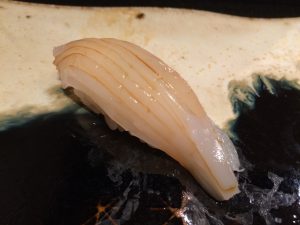 First of all, lightly applying just a small amount of Nikiri shoyu (sushi sauce) on the sushi topping brings out its natural umami flavor and also creates an attractive glossy glaze. Scientifically, this technique leverages the odor-masking properties of soy sauce, which contains sulfur-containing compounds such as methanethiol (methyl mercaptan). These compounds chemically interact with and neutralize unpleasant raw fish odors, effectively masking the “fishy” smell and enhancing the overall sensory experience.
First of all, lightly applying just a small amount of Nikiri shoyu (sushi sauce) on the sushi topping brings out its natural umami flavor and also creates an attractive glossy glaze. Scientifically, this technique leverages the odor-masking properties of soy sauce, which contains sulfur-containing compounds such as methanethiol (methyl mercaptan). These compounds chemically interact with and neutralize unpleasant raw fish odors, effectively masking the “fishy” smell and enhancing the overall sensory experience.
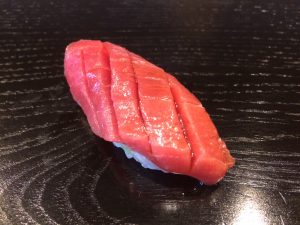 Historically, zuke (soaking fish in nikiri soy sauce) was not limited to tuna but applied to other types of fish as well. This traditional method takes advantage of the bacteriostatic effects of soy sauce—its high salt concentration and presence of antimicrobial peptides inhibit the growth of harmful bacteria like Escherichia coli (E. coli), thereby preserving freshness and enhancing food safety.
Historically, zuke (soaking fish in nikiri soy sauce) was not limited to tuna but applied to other types of fish as well. This traditional method takes advantage of the bacteriostatic effects of soy sauce—its high salt concentration and presence of antimicrobial peptides inhibit the growth of harmful bacteria like Escherichia coli (E. coli), thereby preserving freshness and enhancing food safety.
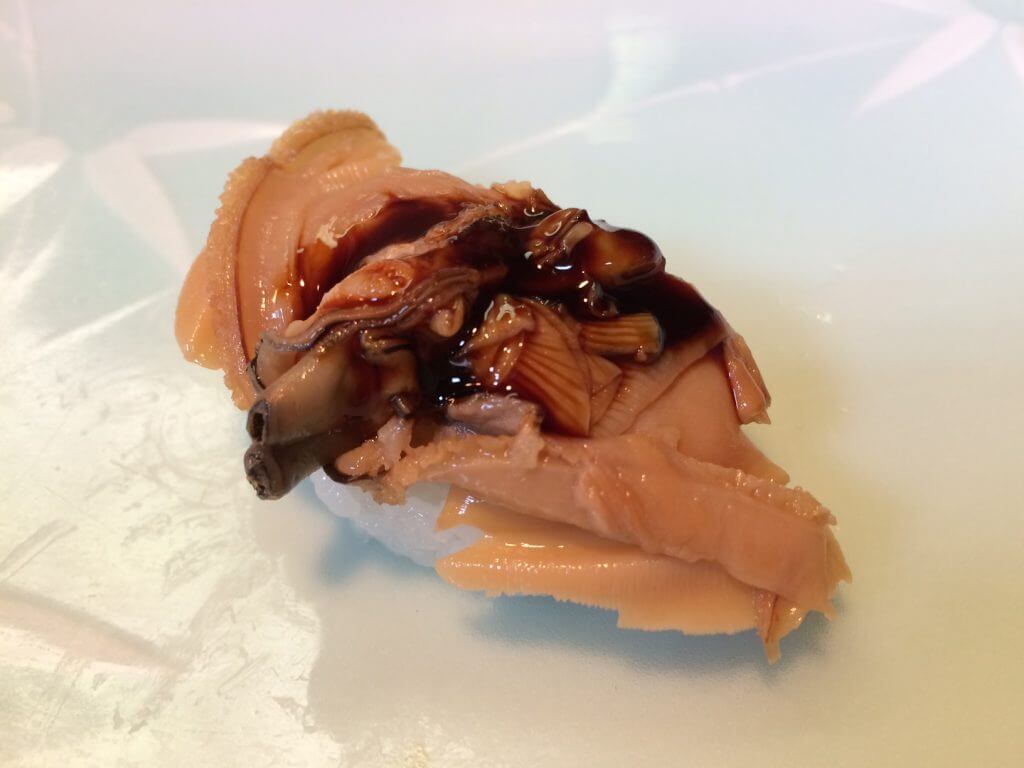 Tsume, a thickened sushi sauce made by boiling down soy sauce with simmered conger eel sauce, mirin and sugar, demonstrates the thermal chemical reactions involved in soy sauce cooking. The Maillard reaction between amino acids from the soy sauce and reducing sugars creates a rich brown glaze and complex aroma that stimulates appetite. This reaction also contributes to the development of subtle caramelized flavors, enhancing the sauce’s depth.
Tsume, a thickened sushi sauce made by boiling down soy sauce with simmered conger eel sauce, mirin and sugar, demonstrates the thermal chemical reactions involved in soy sauce cooking. The Maillard reaction between amino acids from the soy sauce and reducing sugars creates a rich brown glaze and complex aroma that stimulates appetite. This reaction also contributes to the development of subtle caramelized flavors, enhancing the sauce’s depth.
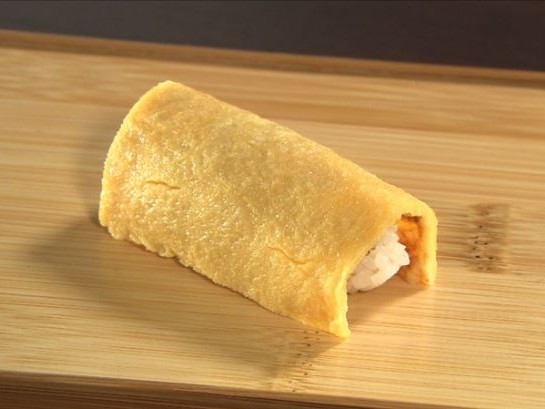
Soy sauce is generally overshadowed by the sushi topping and vinegar rice, but soy sauce plays an important role in bringing out and enhancing the delicious taste of the sushi.
Related contents: SOY SAUCE FOR SUSHI
We hope this information will be helpful.

Revision date: June 13, 2025
Share this article
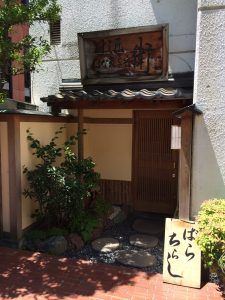 Sushi Sho (in Yotsuya) is a restaurant where you cannot make a reservation easily. Its founder,
Sushi Sho (in Yotsuya) is a restaurant where you cannot make a reservation easily. Its founder,  Kozasazushi (in Shimokitazawa) was opened by the legendary sushi chef, Shuzo Okada (passed away in May 2004). His successor, Tsutomu Nishikawa was, of course, his apprentice. The Omakase course is not an option at this restaurant. The only way to order is to look at the topping board and choose for yourself. This is a shop for experts and may be difficult for guests who can’t read or speak Japanese.
Kozasazushi (in Shimokitazawa) was opened by the legendary sushi chef, Shuzo Okada (passed away in May 2004). His successor, Tsutomu Nishikawa was, of course, his apprentice. The Omakase course is not an option at this restaurant. The only way to order is to look at the topping board and choose for yourself. This is a shop for experts and may be difficult for guests who can’t read or speak Japanese.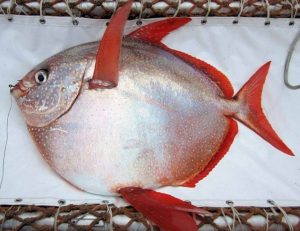 First of all, Opah belly meat with some fat is used for the tuna in Negi-toro (tuna minced with Welsh onion leaves). Opah is widely distributed in warm seas and it’s known to be inexpensive with a smooth taste. The price is less than 1/100 of the Pacific bluefin tuna and if possible Negi-toro made from Opah should be avoided.
First of all, Opah belly meat with some fat is used for the tuna in Negi-toro (tuna minced with Welsh onion leaves). Opah is widely distributed in warm seas and it’s known to be inexpensive with a smooth taste. The price is less than 1/100 of the Pacific bluefin tuna and if possible Negi-toro made from Opah should be avoided.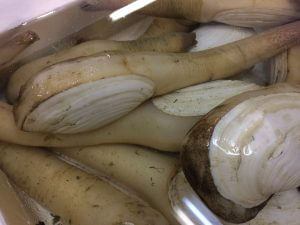 A premium sushi topping is the Mirugai clam (also called Hon-miru). This shellfish is characterized by its unique texture and taste. Instead the Japanese geoduck (Shiro-miru) is used, which sells for half the market price. However, the taste of the two is so similar that even Sushi Tsu has mistaken them, which is great news for dishonest dealers.
A premium sushi topping is the Mirugai clam (also called Hon-miru). This shellfish is characterized by its unique texture and taste. Instead the Japanese geoduck (Shiro-miru) is used, which sells for half the market price. However, the taste of the two is so similar that even Sushi Tsu has mistaken them, which is great news for dishonest dealers.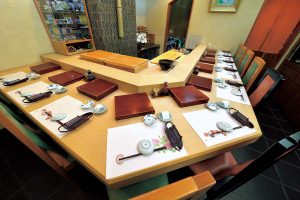 Hier lernen Sie alle Benimmregeln, die nicht nur in Sushi-Lokalen, sondern in allen Gaststätten Japans gelten. Das Wichtigste ist wohl, auf andere Rücksicht zu nehmen sodass sich andere Gäste im Lokal nicht gestört fühlen. Rücksichtnahme – das ist wohl das Wesentliche im japanischen Leben. Bitte merken Sie sich die hier aufgeführten Punkte.
Hier lernen Sie alle Benimmregeln, die nicht nur in Sushi-Lokalen, sondern in allen Gaststätten Japans gelten. Das Wichtigste ist wohl, auf andere Rücksicht zu nehmen sodass sich andere Gäste im Lokal nicht gestört fühlen. Rücksichtnahme – das ist wohl das Wesentliche im japanischen Leben. Bitte merken Sie sich die hier aufgeführten Punkte.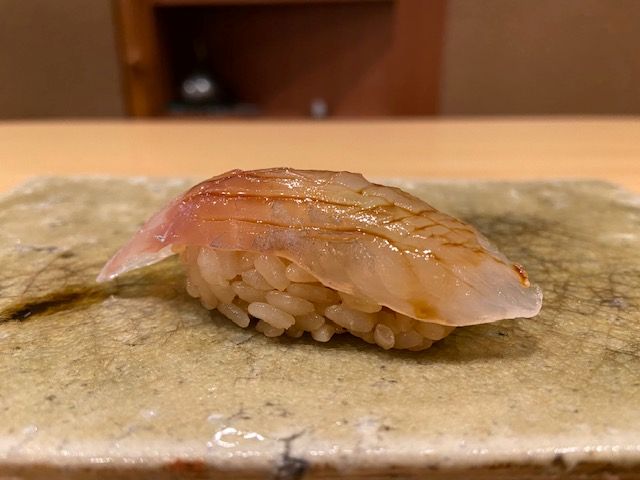
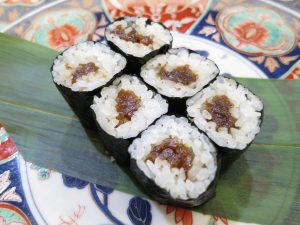 To maximize each flavor of toppings, have some pickled ginger or hot tea between different types of sushi to cleanse your palate. You don’t have to stick to the specific order, though. It seems like having customers eat freely is the idea held in common by most sushi chefs. However, indeed, you won’t be able to taste the next flavor after eating something rather sweet. Japanese conger (Anago), Egg (Tamagoyaki), and Kanpyoumaki should be eaten at the end.
To maximize each flavor of toppings, have some pickled ginger or hot tea between different types of sushi to cleanse your palate. You don’t have to stick to the specific order, though. It seems like having customers eat freely is the idea held in common by most sushi chefs. However, indeed, you won’t be able to taste the next flavor after eating something rather sweet. Japanese conger (Anago), Egg (Tamagoyaki), and Kanpyoumaki should be eaten at the end.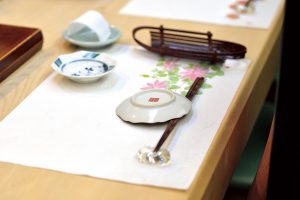 这里提到的各项事宜不仅仅是寿司店特有的礼仪,也适用于日本的所有饮食店。简单概括为一点,就是不影响到其他客人就可以了。请参考下列各项。
这里提到的各项事宜不仅仅是寿司店特有的礼仪,也适用于日本的所有饮食店。简单概括为一点,就是不影响到其他客人就可以了。请参考下列各项。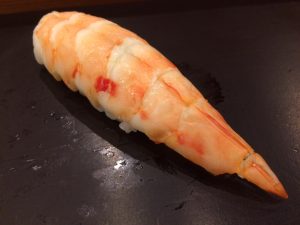 Sushi Shrimp Overview
Sushi Shrimp Overview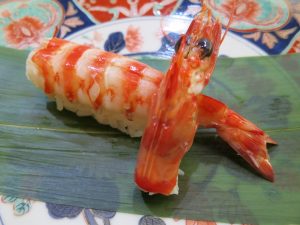
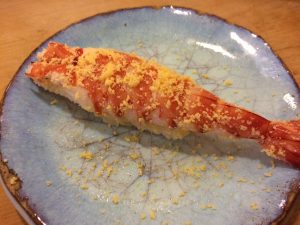
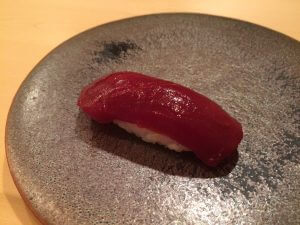 Zuke is one of the traditional Edo-style sushi methods. It is said that it was started in the Edo period to stop tuna from rotting when there were large amounts of the fish in the market. Now that there has been advances in refrigeration technology, it’s no longer necessary, but maturing the fish gives it a completely different taste and brings out its umami. Zuke is divided into two broad methods. Here we describe the characteristics of each.
Zuke is one of the traditional Edo-style sushi methods. It is said that it was started in the Edo period to stop tuna from rotting when there were large amounts of the fish in the market. Now that there has been advances in refrigeration technology, it’s no longer necessary, but maturing the fish gives it a completely different taste and brings out its umami. Zuke is divided into two broad methods. Here we describe the characteristics of each.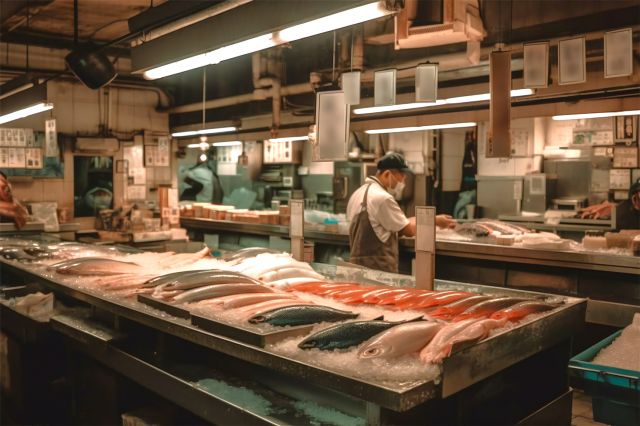
 Fermented beverages such as sake and wine pair well with sushi. Sake is made from rice. So it only makes sense that this would pair well with sushi – also made with rice. It is also the only alcohol that eliminates the smell of fish and shellfish.
Fermented beverages such as sake and wine pair well with sushi. Sake is made from rice. So it only makes sense that this would pair well with sushi – also made with rice. It is also the only alcohol that eliminates the smell of fish and shellfish.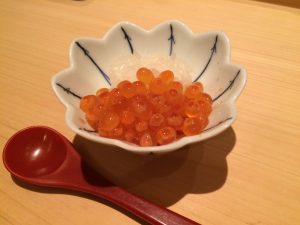 However, neither red nor white wine goes well with herring or salmon roe. The iron specific to wine is said to contribute to the fishy smell of fish roe.
However, neither red nor white wine goes well with herring or salmon roe. The iron specific to wine is said to contribute to the fishy smell of fish roe.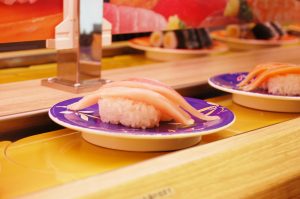 Conveyor belt sushi restaurants and high-end sushi restaurants in areas like Ginza both serve sushi, but they differ significantly in their roles and the quality of the experience they offer.
Conveyor belt sushi restaurants and high-end sushi restaurants in areas like Ginza both serve sushi, but they differ significantly in their roles and the quality of the experience they offer.